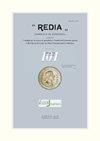MACROHOMOTOMA GLADIATA (HEMIPTERA HOMOTOMIDAE) SEASONAL POPULATION FLUCTUATION AND ITS NATURAL ENEMIES ON FICUS MICROCARPA IN GREECE
IF 0.6
4区 生物学
Q3 ZOOLOGY
引用次数: 1
Abstract
Macrohomotoma gladiata (Kuwayama) (Hemiptera: Homotomidae) has been recently recorded in the Medi- terranean Basin causing serious damage on the widely cultivated ornamental tree Ficus microcarpa L.f. The population structure and seasonal fluctuation of M. gladiata were studied on F. microcarpa in Athens, Greece, from February 2019 to February 2020. In the samples, the presence of its natural enemies was recorded too. Eggs were recorded in May, August and from October to early January; the first two nymphal instars were recorded throughout the year but not in August and September whereas their densities reduced in early May; the middle-aged and the late instars nymphs were recorded in March and April and then appeared again in June and July. Based on our results 1) during winter, only young nymphs of M. gladiata were present; 2) under autumn and winter conditions, young nymphs do not develop further; and 3) most likely M. gladiata has a bivoltine life cycle or may complete a partial third generation in autumn. Parasitized M. gladiata nymphs by a Psyllaephagus Ashmead species were recorded from April to August, with the parasitism rate reaching to 81%. The predator Anthocoris nemoralis (Fabricius) (Hemiptera: Anthocoridae) was present in low numbers in spring. This work revealed useful information for the phenology and rational management of this pest and the potential of its natural enemies in its control. Key Words: Macrohomotoma gladiata, Ficus microcarpa, life cycle, biological control, Anthocoris nemoralis, PsyllaephagusGLADIATA大型同翅目(半翅目同翅科)希腊小榕树的季节性种群波动及其天敌
摘要本文于2019年2月至2020年2月在希腊雅典的小叶榕(F. microcarpa)上研究了大叶榕(M. gladiata, Kuwayama)的种群结构和季节消长。在样本中,也记录了其天敌的存在。在5月、8月和10月至1月初录得卵;头两颗若虫全年都有记录,但在8月和9月没有记录,而它们的密度在5月初下降;中、晚期若虫于3、4月出现,6、7月再次出现。结果表明:1)在冬季,剑兰属植物只有幼若虫存在;2)在秋冬条件下,幼若虫不进一步发育;3)角斗士极有可能在秋季完成部分第三代。4 ~ 8月,记录到一种蚜蝇寄生于剑兰蚜若虫体内,寄生率达81%。春季捕食者麻角蚁(半翅目:麻角蚁科)数量较少。这项工作为该害虫的物候学和合理管理以及其天敌的控制潜力提供了有用的信息。关键词:剑兰大同质瘤,小榕树,生命周期,生物防治,线虫病,树蛾
本文章由计算机程序翻译,如有差异,请以英文原文为准。
求助全文
约1分钟内获得全文
求助全文
来源期刊

Redia-Giornale Di Zoologia
ZOOLOGY-
CiteScore
1.20
自引率
20.00%
发文量
18
审稿时长
>12 weeks
期刊介绍:
Redia supports its long history of basic and applied research in entomology and invertebrate zoology in the field of crop and forest tree protection responding at the same time to the increasing need of innovation and technological improvement.
 求助内容:
求助内容: 应助结果提醒方式:
应助结果提醒方式:


